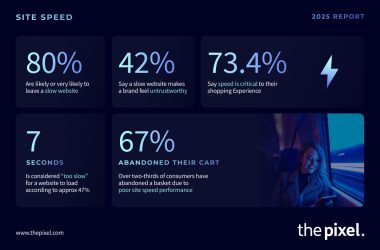In a crowded marketplace, brands must deliver consistent messages across multiple touchpoints. Coordinated campaigns tie together digital, print, social, and outdoor marketing so audiences recognize the brand instantly. This article explores strategies to build seamless brand experiences that strengthen recognition, trust, and loyalty.
Why Consistency Matters
Brand consistency builds familiarity. When potential customers see the same visual style, tone, and messaging across channels, it reinforces memory. Inconsistent branding can confuse audiences and weaken trust. Consistency helps maintain perceived quality and gives a sense of reliability.
A consistent brand identity also improves efficiency. Rather than reinventing creative for each channel, teams can repurpose core brand elements, saving time and budget. It enables measurement and comparison because similar creative allows direct performance insight.
Foundations of Coordinated Campaigns
Define Your Core Brand Elements
Begin by identifying core elements such as logo, color palette, typography, imagery style, voice, and messaging pillars. Document these in brand guidelines that are easy to access. Use these guidelines as a reference whenever creating campaign assets.
Map the Customer Journey
Track how the target audience interacts with the brand at different stages: awareness, consideration, decision, and retention. For each stage, define which channels play a role. This helps to align messaging and visuals across those sequential steps so customers feel the campaign is cohesive across email, social, website, print, or outdoor formats.
Create Channel-Specific Adaptations
Even though core elements remain the same, adapt creatively to suit channel formats and user behaviors. For example, visuals optimized for social media may need cropping, shorter copy, or animations. Direct mail or flyers might include physical textures or tactile features. The message should feel native in each medium but unmistakably part of the same campaign.
Tactics for Orchestrating Consistent Campaigns
Cross-Team Collaboration
Siloed teams cause disconnects. Marketing, creative, digital, and offline teams must share calendars, evidence of campaign components, and approvals. Hold regular check-ins to verify that assets reflect the same guidelines. Use shared asset libraries and tag campaigns to avoid duplication or drift.
Use Unified Campaign Naming
Give each campaign a central name or code and include that identifier in all assets. This helps tracking across platforms. So a summer sale campaign code “SUM24” would appear in social posts, email headers, print leaflets, and landing pages. This reinforces consistency and simplifies analytics.
Centralized Creative Framework
Instead of building each version from scratch, produce a master creative template that is designed to scale into multiple formats. Use modular components: a hero image, logo block, headline area, and call to action. Adapt these modules rather than redesigning fully. This ensures visual alignment across placements.
Consistent Messaging and Tone
Avoid changing the core value proposition or brand voice between channels. If the campaign focuses on “affordability with quality,” that must show up whether in email copy, billboard headlines, or printed flyers. Adjust length and detail, but preserve the core message. That alignment reinforces brand identity.
Measuring and Optimizing Brand Cohesion
Use Cross-Channel Attribution
Track customer journeys across multiple touchpoints. Assign credit to interactions like digital ads, printed mailers, and social media exposure. This helps assess which combinations are most effective. If one channel underperforms yet overlaps with another, rethink sequencing or messaging synergy.
Audit Brand Consistency
Periodically audit live campaign assets. Check whether fonts match, logos are used correctly, color tones are aligned, and copy style and message remain consistent. Spotting deviations early allows corrective action before audiences notice inconsistencies.
Learn and Iterate
After the campaign ends, analyze results across all channels. Compare performance, cost per conversion, reach, and engagement. Look for channels that delivered more synergy when used in coordination, then iterate on creative and sequencing for better cohesion next time.
Combining Print and Digital
Imagine launching a seasonal promotion. The campaign might include social media ads, email blasts, printed flyers delivered in neighborhoods, and in-store posters. To coordinate that effort, the retailer could partner with a leaflet distribution service to ensure print elements reach local audiences in sync with online messaging. For example, by coordinating timing and creativity between online and offline components, the campaign feels seamless to the customer. A provider such as Leaflet Distribution London bridges that gap by handling the print side while matching creative to the digital messaging.
When the flyer arrives at a customer’s door, the social ad they see later will feel familiar. The call to action, imagery style, headline font, and brand voice all echo each other. The customer perceives a unified brand presence, reinforcing credibility and driving stronger engagement.
Final Thoughts
Coordinated campaigns are not about homogenizing every asset, but about reinforcing the same brand identity across formats. Through clear guidelines, cross-team alignment, modular creative, and frequent audits, campaign consistency becomes achievable. The result is that audiences feel recognition and trust, making each marketing touchpoint a reinforcement rather than a distraction.






